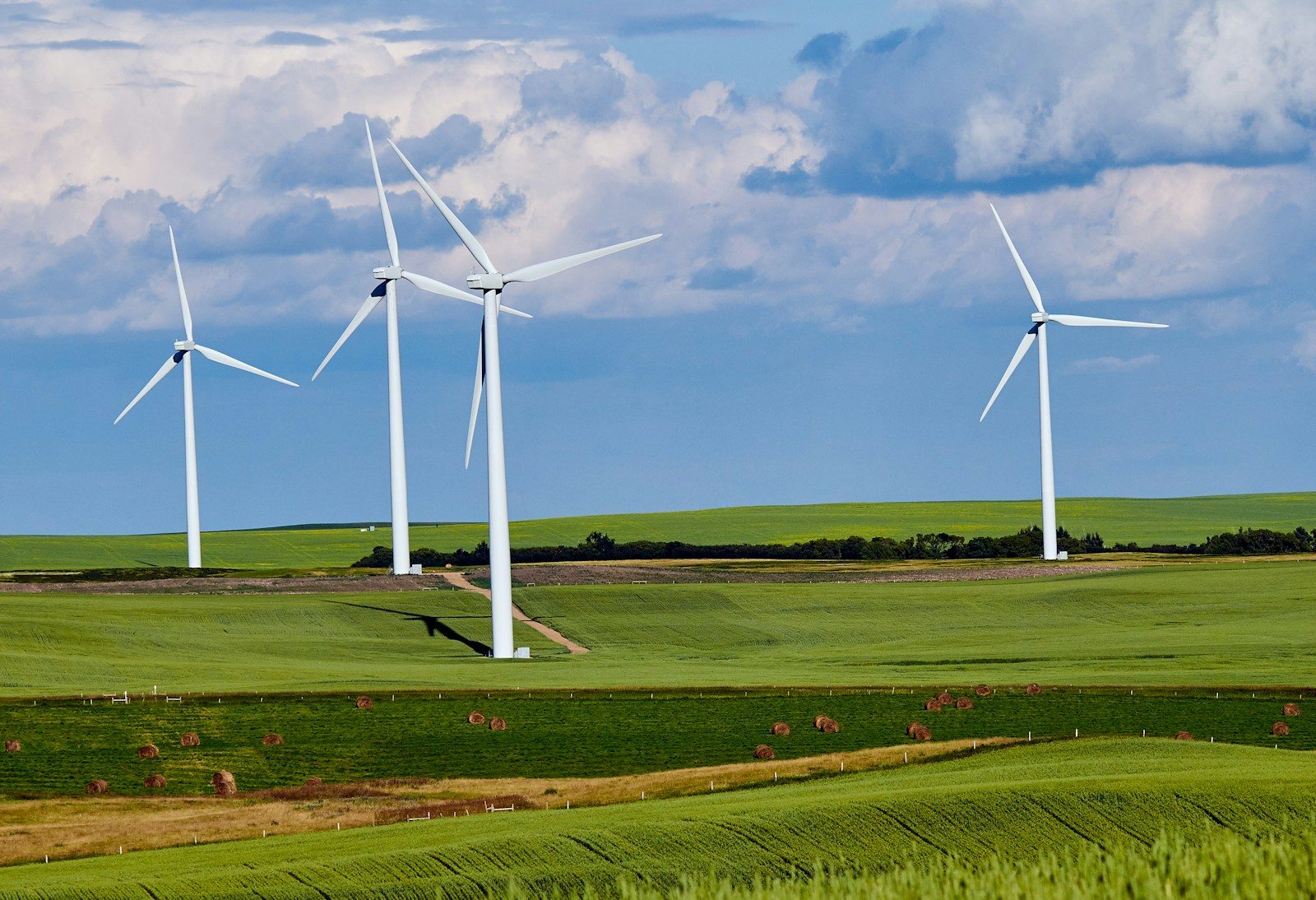Article
Sustainable Logistics
What are Scope 2 Emissions?
Scope 2 emissions refer to the indirect greenhouse gas emissions generated from the production of purchased energy, primarily electricity, as well as steam, heating, and cooling. While businesses do not directly produce these emissions, they are responsible for them because the energy is used to operate their facilities and assets.
Why is it important?
In sustainable logistics and supply chain operations, Scope 2 is especially relevant for warehouses and distribution centres, which often rely on significant amounts of electricity to power automation, lighting, refrigeration and temperature control systems. As businesses transition to electric fleets, Scope 2 emissions will also grow as vehicle charging becomes a substantial new demand on the grid.
How to reduce emissions?
Reducing Scope 2 emissions is both a sustainability and cost opportunity. Options include sourcing renewable electricity, implementing smart energy management systems, and investing in energy-efficient technologies across sites. Transparent reporting of Scope 2 emissions is also a regulatory requirement for many organisations. It is essential for alignment with recognised standards such as the Greenhouse Gas Protocol and Science-Based Targets.
Scope 2 Categories
Purchased Electricity
Purchased electricity covers all the power a business buys from the grid to operate its sites, assets and equipment. In logistics and warehousing, this includes energy used for automation, conveyor systems, refrigeration, lighting and increasingly the charging of electric vehicle fleets.
Because logistics sites often operate around the clock, electricity use can represent a significant proportion of total emissions. These emissions fall under Scope 2 because they are created at the power station, not on-site. Tracking consumption across each site helps identify high-demand areas such as chilled storage or automated facilities.
Reducing electricity-related emissions can be achieved through energy efficiency measures such as LED upgrades, motion sensors and smart motor controls to optimise conveyor and ventilation systems. Many businesses are also switching to renewable tariffs or installing on-site solar generation to reduce reliance on the grid.
Hatmill helps organisations assess consumption patterns, evaluate renewable options and create practical energy management plans that lower emissions and cost simultaneously.

Scope 2 Categories
Purchased Steam, Heating and Cooling
Some logistics operations, particularly large distribution centres or sites connected to shared energy networks, may purchase steam, hot water or cooling from external suppliers. These emissions are included in Scope 2 because, although the energy is generated elsewhere, it is used within the business’s operations.
While less common across the logistics sector, purchased heat and cooling can still form part of the footprint for temperature-controlled or manufacturing-linked facilities. Monitoring and reducing demand can deliver quick gains. Opportunities include improving insulation, maintaining heat exchangers, recovering waste heat, or upgrading chillers to high-efficiency systems.
Hatmill supports clients in identifying where externally supplied heating and cooling are used, quantifying associated emissions, and exploring on-site generation options such as air or ground source heat pumps. These steps help make warehouse and distribution facilities more efficient and resilient while reducing long-term costs.

“Throughout our time working with Hatmill, I have remained impressed with the organisation, focus and tenacity of the team, and they have been instrumental in helping our organisation reach some critical decision points. The team are engaging, personable and a pleasure to work with.”
– Phil Wright, Head of Logistics, Greggs
Calculations
How to Calculate Scope 2 Emissions
Scope 2 emissions are calculated by multiplying the total amount of energy used by the relevant emissions factor for that energy source. For electricity, this depends on the carbon intensity of the grid or the supplier. The UK Government publishes annual conversion factors to support this process, but accurate reporting still requires a specialist understanding of data sources, site boundaries and energy use.
Many businesses also report two figures, one using the location-based method, which reflects the average grid mix, and another using the market-based method, which accounts for specific suppliers or renewable energy contracts.

Calculations
How to Reduce Scope 2 Emissions
Reducing Scope 2 emissions starts with improving energy efficiency across warehouses, offices and fleet charging infrastructure. Practical steps include upgrading to LED lighting, installing smart energy management systems, improving insulation and investing in on-site renewable generation such as solar and battery storage.
Switching to certified green electricity tariffs can also provide immediate carbon reductions while supporting the wider decarbonisation of the energy grid. Scope 1, 2 & 3 Emissions Tracking Software

-
What are Scope 2 emissions?
Scope 2 emissions are indirect greenhouse gases from the generation of purchased electricity, steam, heating or cooling that a business uses to power its operations.
-
Why are Scope 2 emissions important in logistics?
Warehouses, distribution centres and automated systems rely heavily on electricity. As electric vehicle charging expands, managing Scope 2 emissions will be essential for reducing overall carbon impact and energy costs.
-
How can a business reduce its Scope 2 emissions?
By sourcing renewable energy, improving site energy efficiency and investing in on-site solar or battery storage. These actions reduce both emissions and long-term operating costs.
-
What is the difference between location-based and market-based reporting?
Location-based reporting uses the average carbon intensity of the local grid. Market-based reporting reflects the specific emissions associated with a business’s chosen energy supplier or renewable tariff.
Our services
Explore more transport & logistics services from Hatmill
Scope 1, 2 & 3 Emissions Tracking Software
Tracking emissions across transport, warehousing, and supply chains is evolving from manual spreadsheets to smarter, connected digital systems.
Scope 1 Emissions
Scope 1 emissions are the direct greenhouse gases a business produces through its own operations, such as fuel use, heating, and refrigerants. At Hatmill, we help organisations measure and reduce these emissions to cut costs, stay compliant, and progress towards net zero.
Scope 3 Emissions
Scope 3 emissions are the indirect greenhouse gases across a company’s value chain, from transport and packaging to suppliers and waste. At Hatmill, we help organisations map, measure, and reduce these often complex but critical emissions.
Ideas & Insights
Related Insights
Our guides, ideas and views. Explore our insights to deliver tangible improvements to your supply chain and logistics operations.

